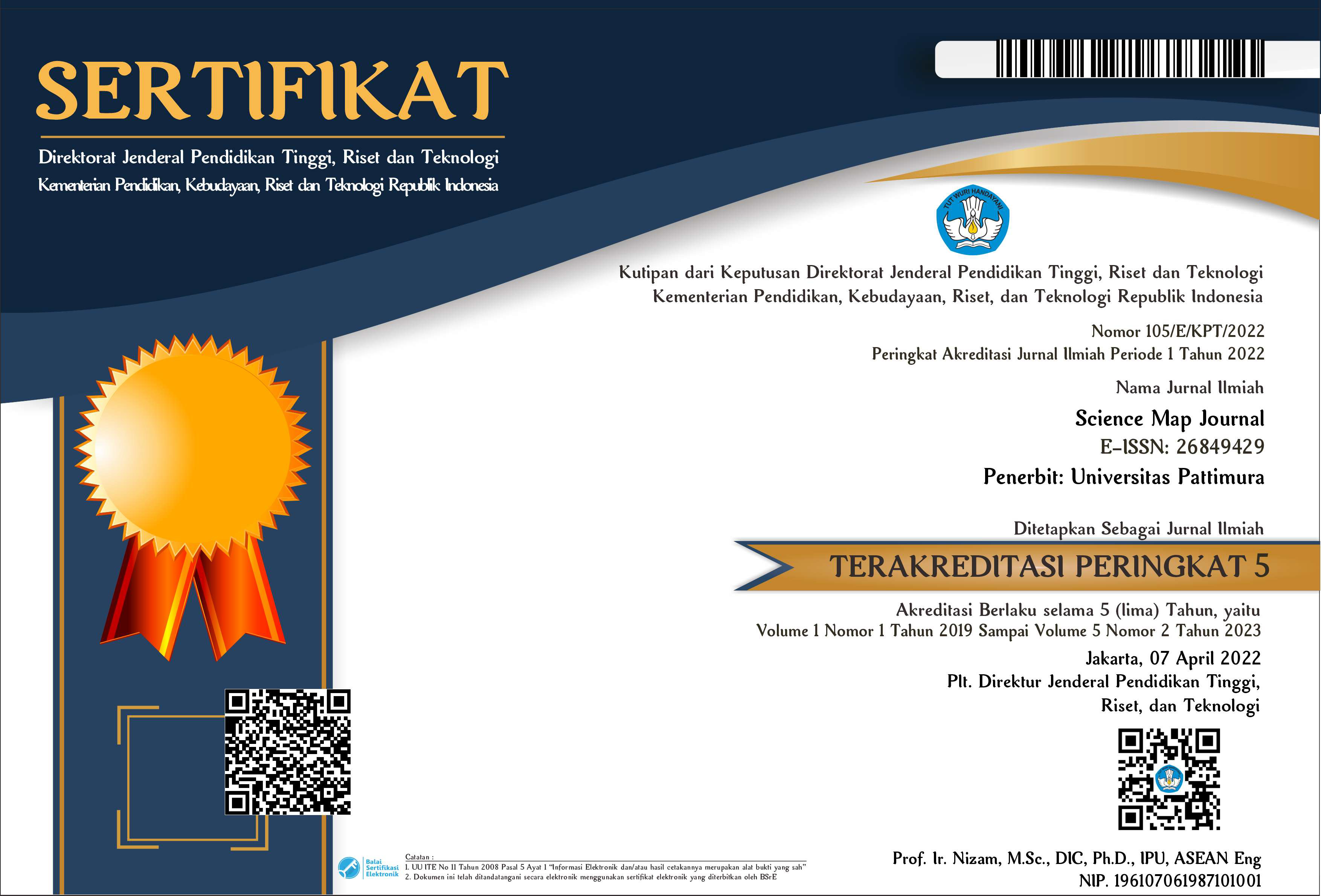KEMAMPUAN PEMECAHAN MASALAH DAN SELF EFFICACY MAHASISWA DALAM MENYELESAIKAN WORKSHEET PERSAMAAN DIFERENSIAL TINGKAT SATU DERAJAT N
Abstract
This study aims to describe the problem solving ability of UMT students in solving the first degree differential equations worksheet with the factorization method. This research is included in the category of qualitative research with a descriptive category. The research subjects were 20 fourth semester students for the 2021/2022 academic year. Data collection methods used are test techniques, filling out structured student worksheets and filling out questionnaires. The test is carried out by filling out the initial test. Filling out structured student worksheets consisting of material, examples and practice questions. Based on the initial test data, filling in the worksheets and questionnaires, the criteria for the three types of students were obtained. Type 1 students fill out 1-2 initial test questions, fill in the material incompletely, the sample questions are only done one question out of the two questions provided with unsystematic problem solving analysis and the last part of the practice questions is not filled in. Type 2 students fill out 2-3 questions for the initial test, complete the material, two examples of questions are done, the practice questions are filled with one question. Type 3 students work on 4 pre-test questions, complete structured student worksheets for each material, sample questions and practice questions. The student fills out a worksheet with a systematic problem-solving analysis
Downloads
References
Alifia N N and Rakhmawati I A. 2018. Study Of Students Mathematical Self-Efficacy Ability in Solving Mathematical Problems. J. Elektro. Educ. Math 5 44.
Fatimah, Fatia. 2012. Kemampuan Komunikasi Matematis dan Pemecahan Masalah Melalui Problem Based-Learning. Jurnal Penelitian dan Evaluasi Pendidikan. Vol 16 (1).
Indahsari I N, Situmorang J C and Amelia R. 2018. Analysis of Mathematical Problem-Solving Abilities and Self-Efficacy of MAN Students J. Educ 1 256.
Mahuda, I. 2017. Pembelajaran Koopertaif Co-op Co-op dengan Pendekatan Open-Ended untuk Meningkatkan Kemampuan Pemecahan MAsalah Matematis Siswa SMA. JPPM. Vol 10 (2), hal: 31-39.
Mashuri S, Djidu, H and Ningrum R K. 2019. Problem based Learning dalam pembelajaran matematika: Upaya guru untuk meningkatkan minat dan prestasi belajar.
NCTM. (2000). NCTM: Principles & Standards for School Mathematics (PSSM) est: 2000. In The National Council of Teachers of Mathematics, Inc. https://www.itws.org/NCTM-ContentProcessCoreStandards.pdf
Novianti D E, Khoirotunnisa A U and Indirani A. 2017. The Profile of Mathematical Problem-Solving in Solving Linear Programming Problems In Terms of Mathematical Communication Skills. JIIPM 6 53.
Pajares F and Miller M D. 1997. Implication of Using Different Forms of Assesment J. Exp. Educ 65 213.
Putri, D and Warmi, A. 2022. Kemampuan Pemecahan Masalah Matematis Siswa dalam Menyelesaikan Soal PISA Matematika pada Konten Bilangan. Jurnal Penenlitian Pembelajaran Matematika. Vol 15 (1), hal: 138-152.
Rahmi S, Nadiaa R, Hasibah B and Hidayat W. 2017. The Relation Self-Afficacy Toward Math With The Math Communication Complete. J. Inf 6 177.
Sariningsih, Ratna., dan Purwasih, Ratni. 2017. Pembelajaran Problem Based Learning untuk Meningkat Kemampuan Pemecahan Masalah Matematis dan Self Efficacy Mahasiswa Calon Guru. Jurnal Nasional Pendidikan Matematika, Vol 1 (1), hal: 23.
Siti Z, Imania S H, Rahayu G and Hidayat W. 2018. Analysis of Problem-Solving Abilities and Mathematical Progression and Self-Efficacy of High School Students. JPMI 1 647.
Schunk, D.H., & Pajares, F. 2002. The Development of Academic Self-Efficacy. San Diego: Academic Press.
Utami R W and Wutsqa D U. 2017. Analysis of Mathematics Problem-Solving Abilities and Self-Efficacy of State Junior High School Students in Ciamis District. J. Ris. Educ. Math 4 166.
Widiastuti, Rosyana T and Euis E R. 2018. Analysis of Problem-Solving Abilities and Self-Efficacy of Junior High School Students on Social Arithmetic Material. J. Math. Educ. Nus 4 35.
Copyright (c) 2022 Rofiroh Rofiroh, Isnaini Mahuda, Taufan Talib, Faqihuddin Faqihuddin

This work is licensed under a Creative Commons Attribution 4.0 International License.




.png)


